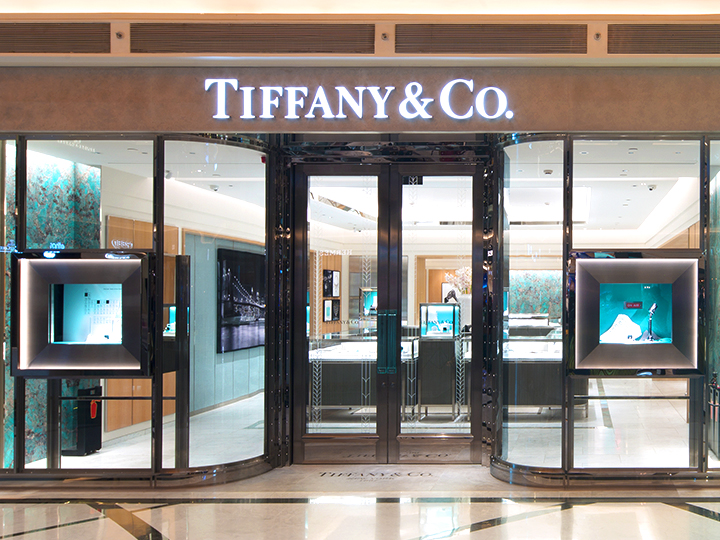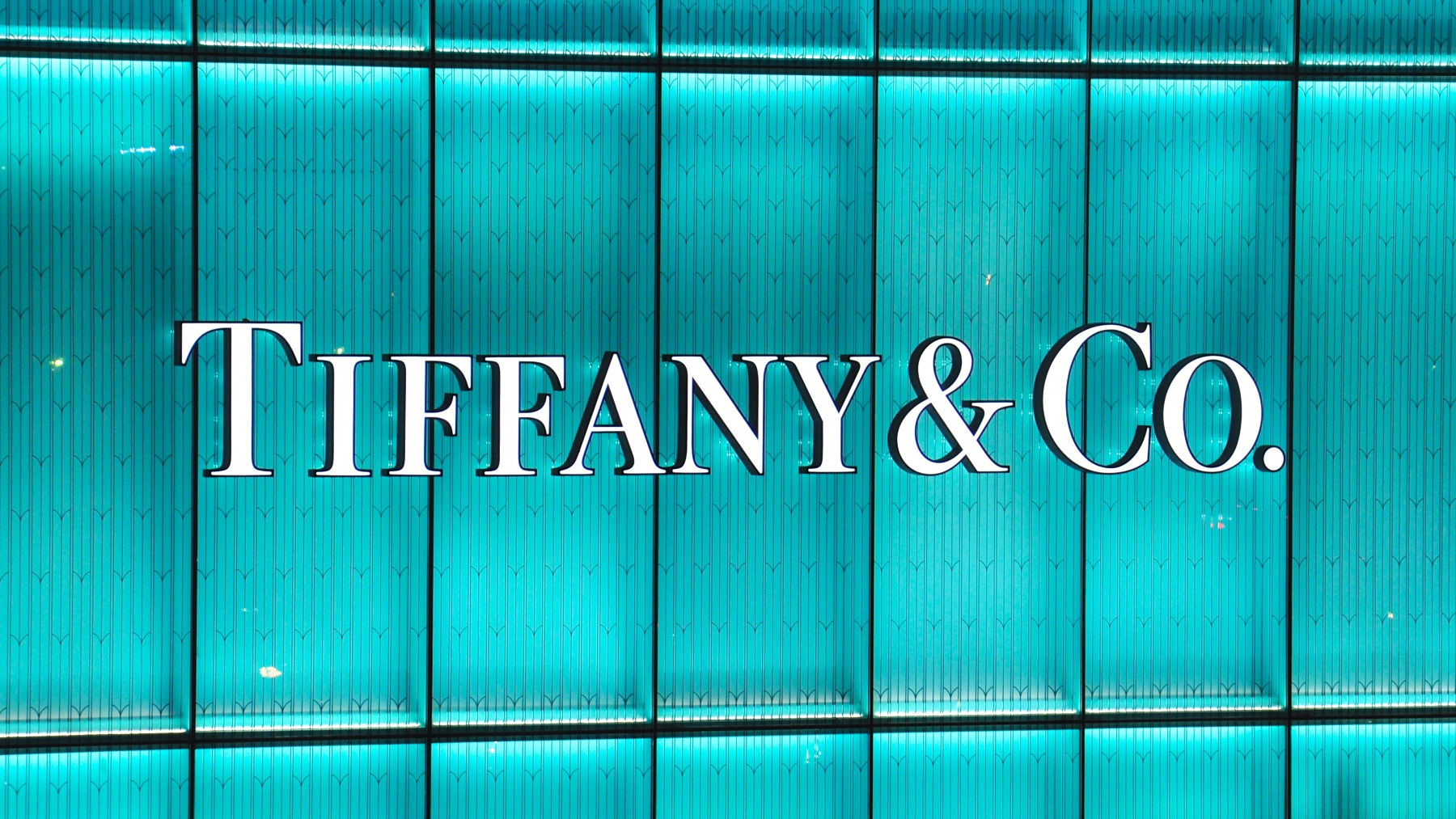Tiffany & Co is a world-renowned American luxury jewelry and specialty retailer that has been in the business for over 183 years. It was founded in 1837 in New York City and has since become synonymous with exquisite craftsmanship, iconic designs, and timeless elegance.
As of 2021, Tiffany & Co operates more than 320 stores worldwide and has a workforce of over 14,000 employees. The company’s net sales in 2020 were $4.2 billion, with a net income of $331 million. In the same year, Tiffany & Co’s digital sales grew by 92%, highlighting the company’s ability to adapt to the digital age and meet customer needs.
Tiffany & Co is famous for its engagement rings, with the iconic six-prong setting becoming an industry standard. The company’s diamonds are responsibly sourced and are of the highest quality, ensuring that customers receive exceptional value for their money. The brand’s legacy continues to resonate with consumers worldwide, making Tiffany & Co a sought-after luxury jewelry brand.
History of Tiffany & Co
Tiffany & Co was founded in 1837 in New York City by Charles Lewis Tiffany and John B. Young. The two men started their business as a small stationery and fancy goods store called Tiffany, Young and Ellis, which was located at 259 Broadway. However, in 1853, after Ellis left the company, the store was renamed Tiffany & Co.
Charles Lewis Tiffany was a visionary businessman who had a passion for design and luxury goods. He was known for his innovative marketing techniques, which included introducing the country’s first mail-order catalog, the Blue Book, in 1845. The catalog featured the latest trends in jewelry and other luxury goods, and became a coveted publication among the elite.
Tiffany & Co’s early success was fueled by its reputation for exceptional craftsmanship and quality. The company quickly gained a following among the wealthy elite of New York, who were drawn to the store’s luxurious displays of diamonds, pearls, and other precious gems. The store’s reputation for fine craftsmanship was cemented in 1858, when Tiffany & Co was awarded the grand prize for silverware at the Exposition Universelle in Paris, an international exhibition that showcased the best in design and technology.
During the Civil War, Tiffany & Co played an important role in the Union effort by producing swords, medals, and other military items. The company also created the Great Seal of the United States in 1885, which is still in use today.
In the late 1800s, Tiffany & Co expanded its operations, opening stores in London and Paris. The company also began to specialize in luxury goods beyond jewelry, including fine china, crystal, and silverware.
Tiffany & Co continued to innovate and set trends throughout the 20th century. In 1886, the company introduced the iconic six-prong setting for engagement rings, which became a standard in the industry. In 1961, the company introduced its signature Tiffany blue color, which is now synonymous with the brand.
Today, Tiffany & Co is one of the world’s most recognized luxury jewelry brands, with a rich history of innovation, quality, and timeless design. The company continues to create stunning pieces of jewelry that are coveted by collectors and enthusiasts around the globe.
Marketing Strategies of Tiffany & Co
iffany & Co. is an American luxury jewelry and specialty retailer that is renowned worldwide for its premium quality diamonds and innovative designs. The company has been in business since 1837, and its marketing strategies have played a crucial role in building and maintaining its reputation as one of the leading luxury brands in the world. Here are some of the marketing strategies employed by Tiffany & Co:
Brand Positioning: Tiffany & Co. has positioned itself as a luxury brand, focused on delivering an exceptional experience to its customers. It has been able to create a strong brand identity by associating its name with elegance, sophistication, and exclusivity. Tiffany & Co. has consistently emphasized its heritage, quality, and craftsmanship in all its marketing efforts, making it a trusted and desirable brand.
Iconic Packaging: Tiffany & Co.’s iconic blue packaging is instantly recognizable and has become synonymous with luxury and elegance. The company has capitalized on the allure of its packaging to create an emotional connection with its customers. The brand’s packaging is so popular that it has become a staple in pop culture, with songs, movies, and TV shows referencing the Tiffany blue box.
Experiential Marketing: Tiffany & Co. has invested heavily in experiential marketing to create unique and memorable experiences for its customers. The brand has hosted numerous events and collaborations with artists and designers to showcase its jewelry in creative ways. One of the most notable events is the annual Blue Book Gala, where Tiffany & Co. showcases its most exquisite high-end jewelry collections to an exclusive guest list.
Digital Marketing: Tiffany & Co. has a strong online presence, with an e-commerce website and active social media accounts. The company uses its social media platforms to showcase its jewelry collections, engage with its followers, and promote its brand values. Tiffany & Co. has also used digital marketing to drive sales, with targeted email marketing campaigns and online promotions.
Celebrity Endorsements: Tiffany & Co. has leveraged the power of celebrity endorsements to create buzz around its brand. The company has collaborated with celebrities such as Beyoncé, Lady Gaga, and Elle Fanning to promote its jewelry collections. Tiffany & Co. has also been featured in numerous movies and TV shows, further solidifying its position as a luxury brand.
In conclusion, Tiffany & Co. has employed various marketing strategies over the years to build its brand and create a unique identity in the luxury jewelry market. From its iconic packaging to its experiential marketing events and digital marketing efforts, the company has consistently focused on delivering exceptional customer experiences and promoting its brand values.
Brand Architecture of Tiffany & Co
Tiffany & Co.’s brand architecture refers to the hierarchy of the brand’s products and how they are structured and marketed to the consumers. Tiffany & Co. has a well-defined brand architecture that helps the company maintain a consistent image across its product lines. Here is an overview of Tiffany & Co.’s brand architecture:
Masterbrand: Tiffany & Co. is the masterbrand, representing the overarching brand identity and values. The company’s masterbrand is built on the foundation of quality, craftsmanship, and luxury.
Sub-brands: Under the masterbrand, Tiffany & Co. has several sub-brands, each representing a distinct product category. These sub-brands include:
Tiffany & Co. Jewelry: This sub-brand includes all the company’s jewelry collections, including engagement rings, wedding bands, necklaces, bracelets, and earrings.
Tiffany & Co. Home & Accessories: This sub-brand includes a range of luxury home goods and accessories, such as crystal vases, silverware, and leather goods.
Tiffany & Co. Fragrances: This sub-brand includes a line of high-end fragrances for men and women.
Endorsed Brands: Tiffany & Co. also has endorsed brands, which are third-party products that carry the Tiffany & Co. brand name. These products are produced by other manufacturers but are marketed and sold under the Tiffany & Co. brand. Some examples of endorsed brands include Tiffany eyewear and Tiffany watches.
Co-Branding: Finally, Tiffany & Co. also engages in co-branding efforts, where it partners with other luxury brands to create exclusive products. For example, the company has collaborated with the fashion house Elsa Peretti and the artist Jean Schlumberger to create exclusive jewelry collections.
Overall, Tiffany & Co.’s brand architecture is structured in a way that allows the company to maintain a consistent brand image across its product lines while also diversifying its offerings to appeal to a wide range of consumers. The masterbrand, sub-brands, endorsed brands, and co-branded products all work together to create a comprehensive brand architecture that reinforces Tiffany & Co.’s status as a leading luxury brand.
Also Read: Louis Vuitton- Success Factors Of The Top Luxury Brand
Brand Elements of Tiffany & Co
Brand elements are the various components that make up a brand’s identity and help consumers identify and differentiate the brand from its competitors. Tiffany & Co. has several brand elements that are integral to its brand identity. Here are some of the key brand elements of Tiffany & Co.:
Logo: Tiffany & Co.’s logo is a highly recognizable brand element, featuring the company’s name in a distinctive shade of blue known as “Tiffany Blue.” The color is trademarked and protected, and it is a key part of the company’s branding. The Tiffany Blue color has become synonymous with luxury and high-end jewelry and is instantly recognizable to consumers.
Packaging: Tiffany & Co.’s iconic packaging is another important brand element. The small blue box with a white ribbon is a symbol of the company’s luxury and exclusivity. The packaging is simple and elegant, and it adds to the overall customer experience of buying Tiffany & Co. products.

Store Design: The design of Tiffany & Co.’s stores is another important brand element. The company’s stores are designed to be elegant and sophisticated, with a focus on showcasing the company’s high-end jewelry collections. The stores feature a range of design elements, such as marble floors, crystal chandeliers, and display cases with jewelry under spotlights. This store design creates an atmosphere of luxury and exclusivity that reinforces the brand’s identity as a high-end jewelry brand.

Product Design: Tiffany & Co.’s product design is a key brand element. The company is known for its classic, timeless designs that are both elegant and understated. The company’s jewelry collections often feature designs inspired by nature, such as flowers, leaves, and animals. The jewelry is meticulously crafted with high-quality materials, such as diamonds, gold, and platinum, and the intricate details and quality craftsmanship set Tiffany & Co. apart from other jewelry brands.
Brand Reputation: Tiffany & Co.’s brand reputation is a critical brand element. The company has a long history of providing high-quality jewelry and exceptional customer service. Tiffany & Co. has become synonymous with luxury and exclusivity, and its brand reputation is a significant driver of its success. The brand has built a reputation for excellence that is recognized and respected around the world.
Celebrity Endorsements: Tiffany & Co.’s use of celebrity endorsements is another brand element that has helped to enhance the company’s brand image. The company has worked with a range of high-profile celebrities over the years, including Audrey Hepburn, who famously starred in the film “Breakfast at Tiffany’s.” These celebrity endorsements have helped to associate Tiffany & Co. with glamour, sophistication, and high-end luxury.
Overall, the combination of these brand elements creates a powerful and cohesive brand identity for Tiffany & Co. The company’s logo, packaging, store design, product design, brand reputation, and celebrity endorsements all work together to reinforce the brand’s image as a high-end, luxury jewelry brand with a rich history and tradition of excellence.
Growth and Revenue of Tiffany & Co
Tiffany & Co. has experienced steady growth over the years, with its revenue increasing consistently. Here are some key figures and statistics that highlight Tiffany & Co.’s growth and revenue:
Revenue Growth: Tiffany & Co.’s revenue has grown steadily over the past decade. In 2012, the company generated $3.86 billion in revenue, and by 2019, its revenue had increased to $4.4 billion.
Geographic Segmentation: Tiffany & Co. generates a significant portion of its revenue from the Americas, with the region accounting for 44% of the company’s net sales in 2020. The Asia-Pacific region is the company’s fastest-growing market, accounting for 31% of net sales in 2020, up from 28% in 2019.
Digital Sales: Tiffany & Co. has invested heavily in digital sales channels, and its e-commerce sales have been growing steadily. In 2020, the company’s global e-commerce sales increased by 123%, with online sales accounting for 14% of the company’s net sales for the year.
Net Income: Tiffany & Co.’s net income has also grown steadily over the past decade. In 2012, the company’s net income was $416 million, and by 2019, it had increased to $586 million.
LVMH Acquisition: In November 2019, LVMH Moët Hennessy Louis Vuitton, the world’s largest luxury group, announced its intention to acquire Tiffany & Co. for $16.2 billion. The acquisition was completed in January 2021, and Tiffany & Co. became a wholly-owned subsidiary of LVMH.
In conclusion, Tiffany & Co. has experienced steady growth over the years, with its revenue increasing consistently. The company’s geographic segmentation, digital sales channels, and net income have all contributed to its growth. The recent acquisition by LVMH is expected to provide further opportunities for growth and expansion for the brand.
Future of Tiffany & Co
The future of Tiffany & Co. looks promising under its new ownership by LVMH, the world’s largest luxury goods conglomerate. LVMH acquired Tiffany & Co. in January 2021 for $15.8 billion, with the goal of expanding its portfolio of luxury brands and strengthening its position in the global luxury market.
One of the main areas of focus for LVMH is expanding Tiffany & Co.’s digital presence and e-commerce capabilities, which have become increasingly important in the wake of the COVID-19 pandemic. This includes investing in new technologies and digital marketing strategies to enhance the customer experience and increase online sales.
LVMH is also expected to invest in expanding Tiffany & Co.’s product offerings beyond traditional jewelry and into categories such as watches, leather goods, and fragrances. This will help the company to appeal to a broader customer base and diversify its revenue streams.
Another area of focus for LVMH is expanding Tiffany & Co.’s presence in Asia, particularly in China, which is the world’s fastest-growing luxury market. LVMH has a strong presence in the region, and it is expected to leverage its expertise and resources to help Tiffany & Co. expand its footprint in this important market.
Overall, the future of Tiffany & Co. looks bright under its new ownership by LVMH. With a focus on expanding its digital capabilities, product offerings, and presence in key markets, the company is well-positioned to continue its legacy as one of the world’s leading luxury retailers.
To read more content like this, subscribe to our newsletter



